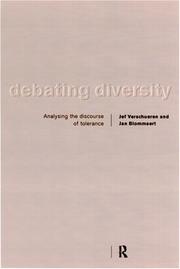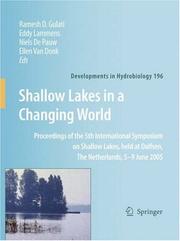| Listing 1 - 10 of 40 | << page >> |
Sort by
|
Book
ISBN: 0203729919 1351396625 1351396633 9781351396639 9780203729915 9781351396622 9781351396615 1351396617 9781138304659 1138304654 9781138304666 1138304662 Year: 2019 Publisher: New York, NY : Routledge,
Abstract | Keywords | Export | Availability | Bookmark
 Loading...
Loading...Choose an application
- Reference Manager
- EndNote
- RefWorks (Direct export to RefWorks)
Cross-Cultural Management: With Insights from Brain Scienceexplores a broad range of topics on the impact of culture in international business and vice versa, and the impact of businesses and individuals in shaping a culture. It provides critical and in-depth information on globalization, global/glocal leadership, cross-cultural marketing, and cross-cultural negotiation. It also discusses many other topics that are not typically found in the mainstream management textbooks such as diversity management, bias management, cross-cultural motivation strategies, and change management. While most literature in the field is dominated by the static paradigm,that is,culture is fixed, nation equates to culture, and values are binary, this book takes a different approach. It regards national values as a first-best-guess and balances it with an introduction of the dynamic paradigm. This school of thought posits that culture is not static, context is the software of the mind, opposing values coexist, change is constant, and individuals can develop a multicultural mind. A unique feature of this book is the contribution of an interdisciplinary approach. It's the first textbook of cross-cultural management that incorporates latest findings from the emerging discipline of cultural neuroscience and evolutionary biology in the discussion. Such a holistic approach is meant to help readers gain a deeper and broader understanding of the subjects.
Diversity in the workplace. --- Personnel management. --- Intercultural communication. --- Cross-cultural communication --- Communication --- Culture --- Cross-cultural orientation --- Cultural competence --- Multilingual communication --- Technical assistance --- Corporations --- Employment management --- Human resource management --- Human resources management --- Manpower utilization --- Personnel administration --- Management --- Public administration --- Employees --- Employment practices liability insurance --- Supervision of employees --- Cultural diversity in the workplace --- Cultural diversity in workforce --- Diversity in the workforce --- Diversity in the work place --- Multicultural diversity in the workplace --- Multicultural workforce --- Workforce diversity --- Multiculturalism --- Personnel management --- Anthropological aspects --- Interculturele communicatie --- Cultuur

ISBN: 0520236688 Year: 2002 Publisher: Berkeley University of California press
Abstract | Keywords | Export | Availability | Bookmark
 Loading...
Loading...Choose an application
- Reference Manager
- EndNote
- RefWorks (Direct export to RefWorks)
Biodiversiteit --- Biodiversity. --- GEO Biogeography --- biodiversity --- biogeography --- 574.472 --- 574 --- Biodiversiteit (bedreigde diersoorten, bedreigde planten) --- Biodiversity --- 574.472 Biodiversity --- Biological diversification --- Biological diversity --- Biotic diversity --- Diversification, Biological --- Diversity, Biological --- Biology --- Biocomplexity --- Ecological heterogeneity --- Numbers of species

ISBN: 0415191386 0415191378 1134654197 1134654189 128033259X 0203029275 0203263146 9780203263146 9780415191388 9780203029275 9780415191371 9781134654192 9786610332595 6610332592 Year: 1998 Publisher: London Routledge
Abstract | Keywords | Export | Availability | Bookmark
 Loading...
Loading...Choose an application
- Reference Manager
- EndNote
- RefWorks (Direct export to RefWorks)
Immigration, racism and nationalism have become hotly debated issues in the Western world. This highly original and controversial work focuses on the language used by the vast majority who regard themselves as being open to a multi-cultural society.Using Belgium as a case study and drawing parallels with the UK, US, Europe and the former Yugoslavia, the authors analyse this language and reveal a remarkable consistency between these liberal voices, such as in news-reporting, and the language used by radical racist and nationalist groups.
Sociology of minorities --- Sociolinguistics --- Pragmatics --- Racisme --- Rassenvraagstuk --- Tolérance --- Verdraagzaamheid --- #A9901A --- #KVHA:Discourse analysis --- #KVHA:Racisme --- Cultural pluralism. --- Discourse analysis --- Language and culture. --- Racism. --- Toleration. --- Social aspects. --- Cultural pluralism --- Language and culture --- Racism --- Toleration --- Bigotry --- Intolerance --- Tolerance --- Virtues --- Discrimination --- Bias, Racial --- Race bias --- Race prejudice --- Racial bias --- Prejudices --- Anti-racism --- Race relations --- Culture and language --- Culture --- Cultural diversity --- Diversity, Cultural --- Diversity, Religious --- Ethnic diversity --- Pluralism (Social sciences) --- Pluralism, Cultural --- Religious diversity --- Cultural fusion --- Ethnicity --- Multiculturalism --- Social aspects --- Critical race theory --- pluralisme --- racisme --- taal --- multiculturele samenleving
Book
ISBN: 9789048186433 9789048186426 9048186420 9786612996177 9048186439 1282996177 Year: 2011 Publisher: Dordrecht Springer Netherlands
Abstract | Keywords | Export | Availability | Bookmark
 Loading...
Loading...Choose an application
- Reference Manager
- EndNote
- RefWorks (Direct export to RefWorks)
Taphonomic bias is a pervasive feature of the fossil record. A pressing concern, however, is the extent to which taphonomic processes have varied through the ages. It is one thing to work with a biased data set and quite another to work with a bias that has changed with time. This book includes work from both new and established researchers who are using laboratory, field and data-base techniques to characterise and quantify the temporal and spatial variation in taphonomic bias. It may not provide all the answers but it will at least shed light on the right questions.
sedimenten --- geochemie --- General ecology and biosociology --- Geochemistry --- paleontologie --- biodiversiteit --- biogeografie --- sedimentatie --- General palaeontology --- Biogeography --- Geology. Earth sciences --- Taphonomy --- Taphonomie --- EPUB-LIV-FT LIVECOLO LIVTERRE SPRINGER-B --- Taphonomy. --- Paleontology . --- Biodiversity. --- Geochemistry. --- Sedimentology. --- Paleontology. --- Biogeosciences. --- Petrology --- Chemical composition of the earth --- Chemical geology --- Geological chemistry --- Geology, Chemical --- Chemistry --- Earth sciences --- Biological diversification --- Biological diversity --- Biotic diversity --- Diversification, Biological --- Diversity, Biological --- Biology --- Biocomplexity --- Ecological heterogeneity --- Numbers of species --- Fossilogy --- Fossilology --- Palaeontology --- Paleontology, Zoological --- Paleozoology --- Historical geology --- Zoology --- Fossils --- Prehistoric animals in motion pictures --- Geobiology. --- Biosphere
Book
ISBN: 9073242088 9789073242081 Year: 2003 Publisher: Brussels Royal Belgian Institute of Natural Sciences
Abstract | Keywords | Export | Availability | Bookmark
 Loading...
Loading...Choose an application
- Reference Manager
- EndNote
- RefWorks (Direct export to RefWorks)
General ecology and biosociology --- Belgium --- Biological diversity--Belgium. --- Biodiversité --- Biodiversity --- Espèce en danger --- endangered species --- Côtes --- Coasts --- forests --- Flore --- Flora --- Faune --- Fauna --- Écosystème --- ecosystems --- Habitat --- habitats --- Paysage --- Landscape --- Biodiversiteit --- 574.472 <493> --- #A0312A --- 571 Natuurbescherming --- ZV Biogeography --- 570.3 --- België --- 574 --- Biodiversiteit (bedreigde diersoorten, bedreigde planten) --- 577.3 --- biodiversiteit : belgië (ler) --- Natuurbescherming ; algemeen --- Environmental Sciences and Forestry. Nature Management --- CON Bioconservation --- Algae --- Convention on Biological Diversity (signed 1992) --- EU Birds Directive --- EU Habitat Directive --- Fungi --- biodiversity --- catalogue --- evaluation --- fauna --- flora --- landscapes --- marine --- prokaryotic diversity --- taxonomy --- zoology --- Biodiversity. --- Ecosystemen --- Biodiversiteit ; België --- Biological diversity--Belgium --- PXL-Tech 2019 --- natuurbescherming --- diversiteit --- Ecosystem. --- Biodiversiteit ; België --- Ecosystem

ISBN: 3110873060 3110143879 9783110143874 9783110873061 Year: 1994 Volume: 5 Publisher: Berlin De Gruyter
Abstract | Keywords | Export | Availability | Bookmark
 Loading...
Loading...Choose an application
- Reference Manager
- EndNote
- RefWorks (Direct export to RefWorks)
The Structure of Lexical Variation : Meaning, Naming, and Context
Lexicology. --- Language and languages --- Characterology of speech --- Language diversity --- Language subsystems --- Language variation --- Linguistic diversity --- Variation in language --- English language --- Variation. --- Lexicology --- Academic collection --- #KVHA:Lexicologie --- #KVHA:Taalkunde --- 801.3 --- Variation --- Lexicografie. Woordenboeken --- 801.3 Lexicografie. Woordenboeken --- Lexicology. Semantics --- Dutch language --- Lexicologie --- Variation (Linguistique) --- Language and languages - Variation
Book

ISBN: 9783035623352 9783035623369 3035623368 303562335X Year: 2021 Publisher: Basel
Abstract | Keywords | Export | Availability | Bookmark
 Loading...
Loading...Choose an application
- Reference Manager
- EndNote
- RefWorks (Direct export to RefWorks)
Welches Wissen ist für den Landschaftsarchitekten unabdingbar? Die Antworten auf diese Frage sind so vielfältig, wie es die Landschaftsarchitektur selbst ist. Das Buch versammelt fünf Antworten von 50 Landschaftsarchitekten aus Europa, Nord- und Südamerika, Asien und Australien. Es sind Stimmen von Praktizierenden und Lehrenden, von jungen Start-ups wie von international etablierten Büros. Die Publikation veranschaulicht die komplexe und dynamische Natur der Disziplin und bildet so einen vielfältigen Querschnitt der notwendigen Expertise. Zugleich macht sie aber auch die jeweilige individuelle Haltung erfahrbar, in die geografische Gegebenheiten, soziale Kontexte sowie politische Umstände einfließen.250 Statements werden auf je einer Doppelseite präsentiert und durch eine Abbildung veranschaulicht. What knowledge is indispensable for the landscape architect? The answers to this question are as diverse as landscape architecture itself.In this book 50 landscape architects from Europe, North and South America, Asia and Australia each give five responses. These include practitioners and teachers, young start-ups as well as internationally established firms. The publication illustrates the complex and dynamic nature of the discipline, and presents a diverse cross-section of the core expertise of this field. At the same time, it allows the reader to trace the individual attitudes into which geographical conditions, social contexts and political circumstances flow.Each of the 250 statements is presented on a double page and illustrated by a picture.
Landscape architecture --- 71(035) --- Horticultural service industry --- Landscape gardening --- Landscaping industry --- Stedenbouw. Ruimtelijke ordening ; handboeken --- 712.2 --- 712.2 Planologie van landschappen--(algemeen) --- Planologie van landschappen--(algemeen) --- ARCHITECTURE / Landscape. --- landscape architects, landscape architecture, knowledge, diversity. --- Aménagement paysager --- Paysagisme --- Landschapsarchitectuur --- Ontwerptheorie --- Landscape architects. --- Landscape architecture. --- Architects --- Landschapsarchitectuur ; encyclopedieën --- landscape architecture, architecture, 21st century, knowledge, diversity.
Book
ISBN: 9781848222854 9781848222861 9781848223004 9781848223011 1848222858 Year: 2018 Publisher: London : Lund Humphries,
Abstract | Keywords | Export | Availability | Bookmark
 Loading...
Loading...Choose an application
- Reference Manager
- EndNote
- RefWorks (Direct export to RefWorks)
Why it is important to plan for the natural environment at a whole landscape scale and to connect wildlife habitats together? Why do planners need to look beyond protecting particular species and their habitats? Why should planners help nature to recolonise towns and cities and how best can they do this? In seeking to answer such questions, this book provides a grounding for planners and other related professionals in the key concepts associated with biodiversity and the natural environment, and in how to apply them in practice. It looks at how natural environment policy has shifted from the protection of rare species and nature reserves to a more holistic approach, based on biodiversity. Beginning with a brief history of environmental movements, the guide then focuses on changing approaches to conserving the natural environment. It explains environmental sustainability approaches as well as techniques for planners, using ideas such as environmental capacity and natural capital and, more recently, ecosystem services and multi-functional solutions. It addresses issues of spatial scale, connectivity, and ecological networks, recognising that small nature reserves are vulnerable and lack resilience to change. Other key topics include rebuilding biodiversity through habitat creation, enhancement, and restoration, along with the `re-naturing' of cities. The tools and policy are set out before identifying key lessons and implications for future policy development and planning practice.
Politique de l'environnement --- Environnement --- Biodiversité --- Urbanisme durable --- Environmental policy --- Environmental protection --- Biodiversity --- Biodiversity conservation --- City planning --- Protection --- Planification --- Conservation des ressources --- Aspect --- Planning --- Environmental aspects --- Nature conservation --- Sustainability --- 719 --- Duurzame landschapsarchitectuur ; 21ste eeuw --- Natuur- en landschapsbescherming ; milieu --- Landschapszorg ; leefmilieu ; ecologie --- Sustainability science --- Human ecology --- Social ecology --- Biological diversity conservation --- Conservation of biodiversity --- Diversity conservation, Biological --- Gender mainstreaming in biodiversity conservation --- Maintenance of biological diversity --- Preservation of biological diversity --- Conservation of natural resources --- Ecosystem management --- Biological diversification --- Biological diversity --- Biotic diversity --- Diversification, Biological --- Diversity, Biological --- Biology --- Biocomplexity --- Ecological heterogeneity --- Numbers of species --- Environmental planning --- Environment and state --- Environmental control --- Environmental management --- Environmental quality --- State and environment --- Environmental auditing --- Conservation of nature --- Nature --- Nature protection --- Protection of nature --- Applied ecology --- Conservation biology --- Endangered ecosystems --- Natural areas --- Landschaps- en tuinarchitectuur ; bescherming van de landelijke en stedelijke leefbaarheid in het algemeen --- Conservation --- Government policy --- Politique de l'environnement. --- Biodiversité. --- Planification. --- Conservation des ressources. --- Aspect. --- urban planning --- Biodiversiteit --- Ecosystemen --- 574 --- 712 --- 712.037 --- Ecologie en bioverscheidenheid --- Landschapsarchitectuur --- 21ste eeuw (landschapsarchitectuur) --- Biodiversité. --- Biodiversité
Book
ISBN: 9783540686675 9783540686668 Year: 2010 Publisher: Berlin, Heidelberg Springer Berlin Heidelberg
Abstract | Keywords | Export | Availability | Bookmark
 Loading...
Loading...Choose an application
- Reference Manager
- EndNote
- RefWorks (Direct export to RefWorks)
One of the main objectives of nature conservation in Europe is to protect valuable cultural landscapes characterized by a mixture of open habitats and hedges, trees and patchy woodland (semi-open landscapes).The development of these landscapes during the past decades has been characterized by an ongoing intensification of land use on the one hand, and an increasing number of former meadows and pastures becoming fallow as a result of changing economic conditions on the other hand. Since species adapted to open and semi-open landscapes contribute to biodiversity in Europe in a major way, this development is of great concern to nature conservation. In several countries largescale, nature-adapted pastoral systems have been recognized as one solution to this problem. These systems could offer an alternative to industrial livestock raising and keep a high biodiversity on the landscape level. Against the background of livestock diseases such as BSE and Foot and Mouth Disease and the efforts to reform the Common Agricultural Policy in the EU by changing the criteria for agricultural subsidies, these concepts gain particular significance.They could also represent an alternative to the established, costly habitat management tools.
Environment. --- Geoecology/Natural Processes. --- Biogeosciences. --- Geography (general). --- Applied Ecology. --- Landscape Ecology. --- Environmental sciences. --- Life sciences. --- Geography. --- Landscape ecology. --- Ecology. --- Sciences de l'environnement --- Sciences de la vie --- Géographie --- Ecologie du paysage --- Ecologie --- Begrazing : natuurbeheer --- 636.084.252 --- Biodiversity --- Conservation of natural resources --- Farms, Large --- Grazing --- Large farms --- Conservation of resources --- Natural resources --- Natural resources conservation --- Resources conservation, Natural --- Biological diversification --- Biological diversity --- Biotic diversity --- Diversification, Biological --- Diversity, Biological --- Environmental aspects --- Conservation --- Agricultural systems --- Animal feeding --- Range management --- Pastures --- Rangelands --- Farms, Size of --- Environmental protection --- Natural resources conservation areas --- Biology --- Biocomplexity --- Ecological heterogeneity --- Numbers of species

ISBN: 9781402063992 1402063997 9786611116446 9781402063985 Year: 2007 Publisher: Dordrecht Springer
Abstract | Keywords | Export | Availability | Bookmark
 Loading...
Loading...Choose an application
- Reference Manager
- EndNote
- RefWorks (Direct export to RefWorks)
Since the late 1980s, shallow lakes in Europe and North America have been receiving concerted attention from limnologists, fishery biologists and lake managers. These developments relate to deterioration of water quality in the lakes due to pollution and accelerated eutrophication, caused by increased urbanization and agriculture in the lake catchments, overexploitation of fish and higher water level fluctuations. The water-quality and management problems of lakes have led to a greater need for fundamental researches on shallow lakes in order to gain a deeper insight into the structure and functioning of the food web in these waters. New knowledge relating to littoral-pelagial interactions and the sediment-water interface has facilitated the development of new lake restoration techniques. This volume, with 41 peer-reviewed papers, comprises the proceedings of the 5th International Symposium on Shallow Lakes, which was held at Dalfsen, The Netherlands, on 5-9 June 2005. It has the theme Shallow Lakes in a Changing World and deals with water-quality issues, such as changes in lake limnology, especially those driven by eutrophication and pollution, increased nutrient loading and productivity, perennial blooms of cyanobacteria and loss of biodiversity. The general consensus is that the lakes under restoration respond by showing an increase in water clarity followed by an increase in macrophyte coverage and biomass. Consequently, there is now ground for theoretical speculations on the so-called alternate stable states' observed in many such lakes under restoration.
General ecology and biosociology --- ecologie --- milieuzorg --- ecosystemen --- biodiversiteit --- Environmental protection. Environmental technology --- Eutrophication --- Algal blooms --- Water quality --- Environmental Sciences and Forestry. Ecology --- Environmental Sciences and Forestry. Water Management --- Aquatic Ecology. --- Water Quality. --- Ecología --- Ecosystems. --- Aquatic ecology . --- Applied ecology. --- Biodiversity. --- Ecology. --- Freshwater & Marine Ecology. --- Applied Ecology. --- Biological diversification --- Biological diversity --- Biotic diversity --- Diversification, Biological --- Diversity, Biological --- Biology --- Biocomplexity --- Ecological heterogeneity --- Numbers of species --- Ecology --- Environmental protection --- Nature conservation --- Aquatic biology --- Biocenoses --- Biocoenoses --- Biogeoecology --- Biological communities --- Biomes --- Biotic community ecology --- Communities, Biotic --- Community ecology, Biotic --- Ecological communities --- Ecosystems --- Natural communities --- Population biology --- Lake ecology --- Lake restoration --- Water quality management
| Listing 1 - 10 of 40 | << page >> |
Sort by
|

 Search
Search Feedback
Feedback About UniCat
About UniCat  Help
Help News
News